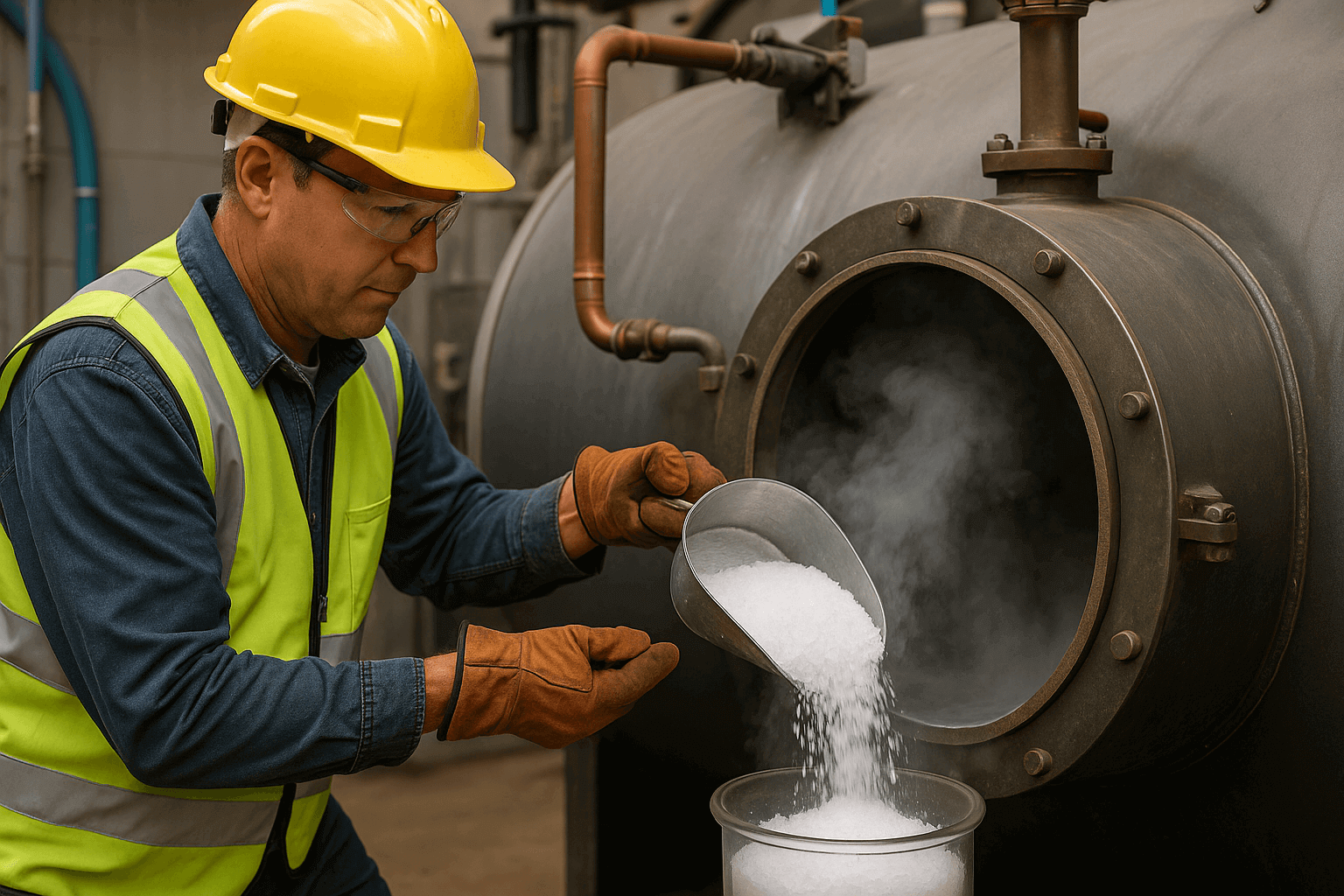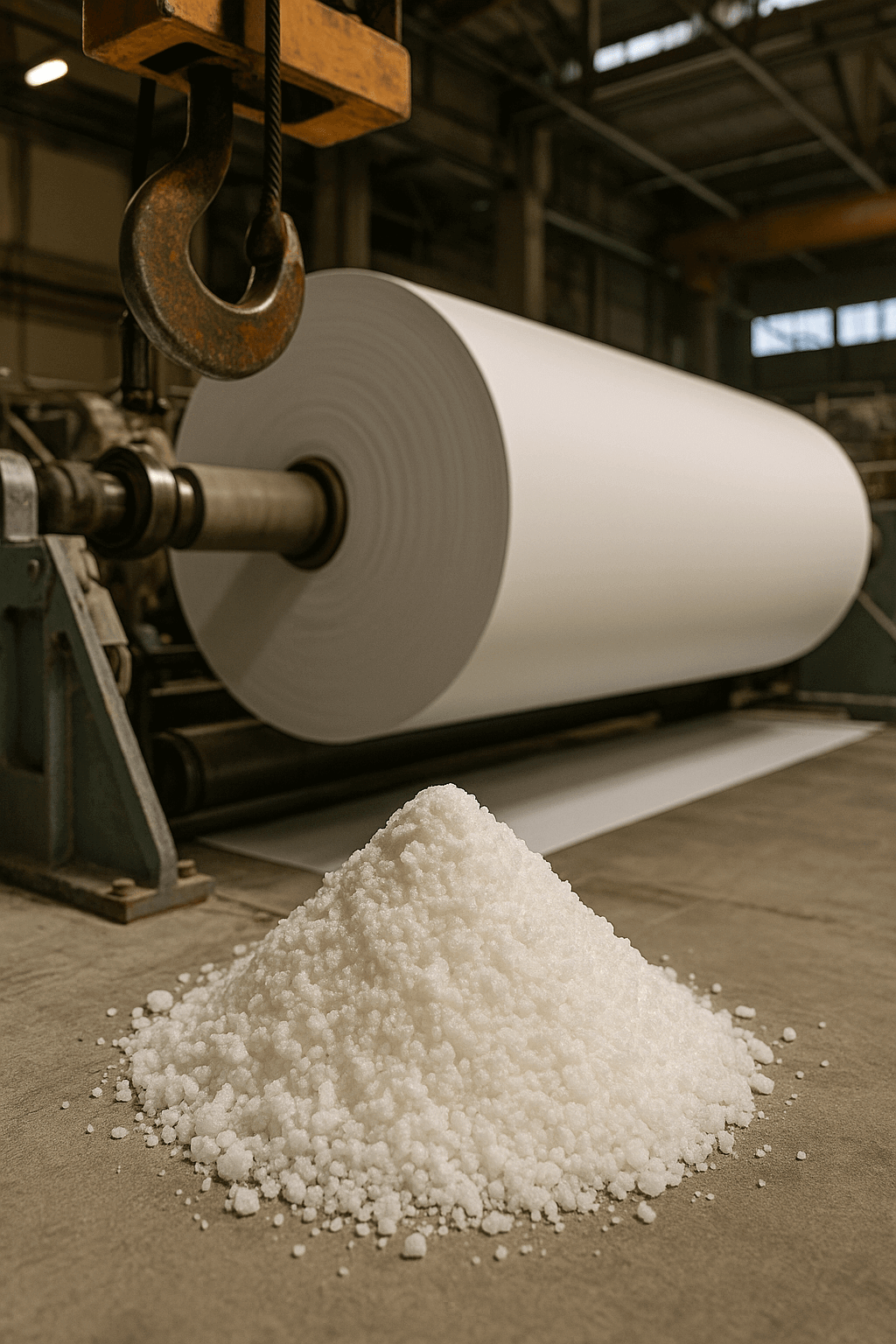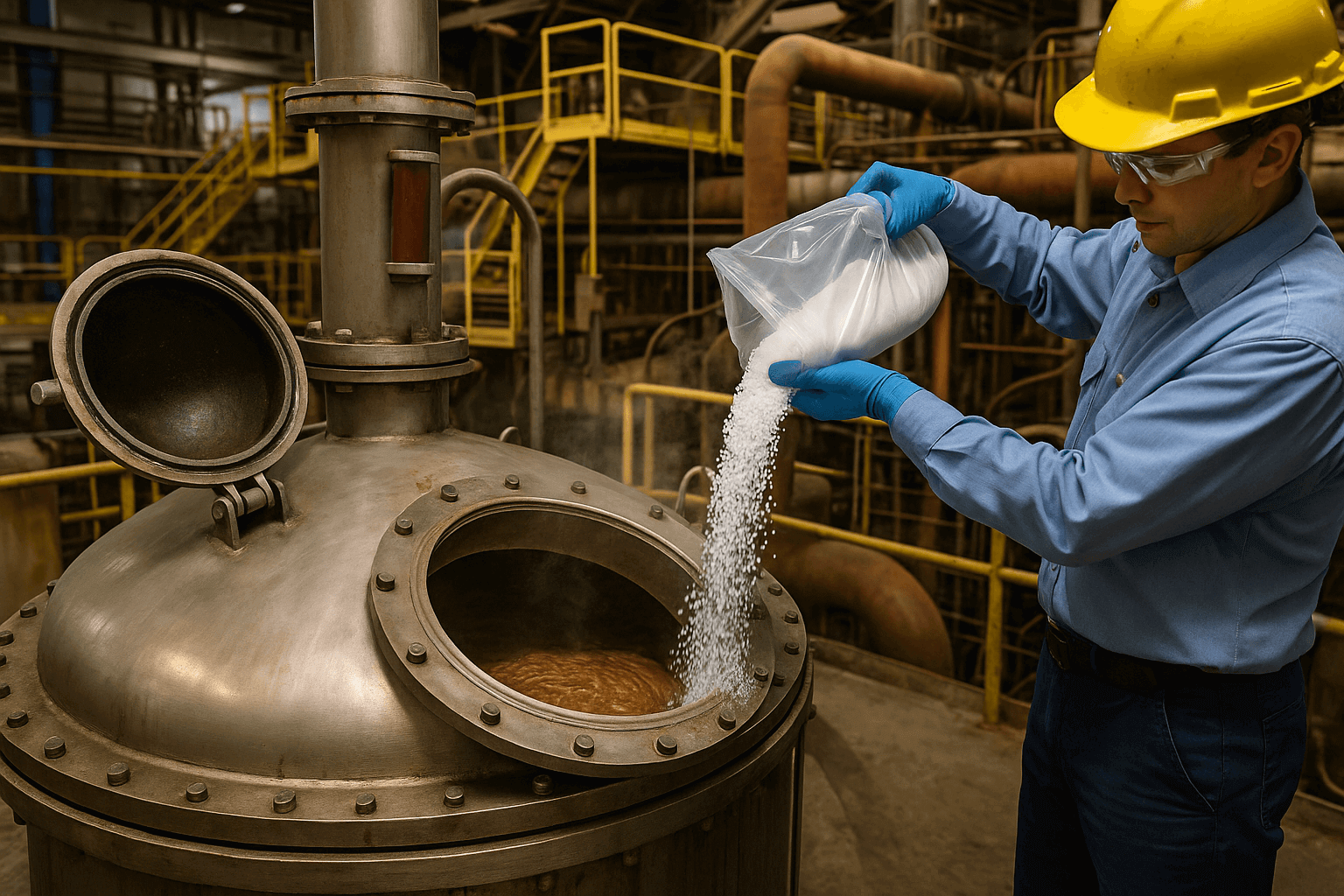Application of Ammonium Sulfate in the Pulp and Paper Industry
Application of Ammonium Sulfate in the Pulp and Paper Industry
The paper industry is one of the world’s strategic industries, constantly seeking to improve product quality, reduce costs, and minimize environmental impacts. One of the important compounds contributing to these goals is ammonium sulfate. Besides supplying nitrogen and sulfur for agricultural use, ammonium sulfate has gained a special position in the pulp and paper industry. Its use in various stages of paper production improves pulp quality, reduces the consumption of bleaching agents, increases equipment durability, and lowers overall production costs.
History of Ammonium Sulfate Use in Pulp Production
Since the late 19th century, the paper industry has faced major challenges such as lignin removal, improving whiteness, and enhancing mechanical strength. Researchers discovered that sulfur-containing compounds, including ammonium sulfate, could assist in the lignin separation process.
Over time, ammonium sulfate became commonly used as an auxiliary material in the Kraft process. The main reason for this adoption was the reduction of energy costs and the use of traditional chemicals like chlorine and sodium hydroxide. Today, many modern paper mills in Europe, China, India, and North America extensively use this compound.
Applications of Ammonium Sulfate in Pulp and Paper Industry
1. Role in the Kraft Process
The Kraft process is one of the most widely used chemical methods in pulp production. In this process, chemical compounds break down lignin and release fibers. The presence of ammonium sulfate acts as an auxiliary, accelerating reactions, reducing energy consumption, and improving overall efficiency.
2. Role in Lignin Removal
Lignin, an undesirable component in wood, must be removed from cellulose fibers to improve paper quality. Ammonium sulfate creates favorable chemical conditions, promoting more effective lignin removal, resulting in brighter, more uniform, and stronger paper.
3. Improving Cellulose Fiber Quality
Cellulose fibers are the foundation of paper quality. When fibers remain healthy and strong, the final paper exhibits higher tensile strength and tear resistance. Using ammonium sulfate enhances these properties and improves printability.
4. Effect on Bleaching
Bleaching is a crucial stage in paper production. Ammonium sulfate helps regulate the chemical environment during bleaching, reducing the need for chlorine and other bleaching agents. This not only lowers production costs but also minimizes the environmental impact of the bleaching process.
Table Applications of Ammonium Sulfate in Pulp Production
| Process Stage | Recommended Dosage (kg/ton of pulp) | Practical Effects |
|---|---|---|
| Kraft Process | 5–10 | Enhances lignin reactions and increases efficiency |
| Lignin Removal | 3–7 | Reduces dark spots and improves brightness |
| Bleaching | 2–5 | Reduces chlorine use and improves bleaching quality |
| Fiber Strengthening | 4–6 | Increases tensile strength and printability |
Technical Details in the Kraft Process and Ammonium Sulfate’s Role
What is the Kraft Process?
The Kraft process is widely used for pulp production. Wood chips are cooked in an alkaline solution containing sodium hydroxide and sodium sulfide. This dissolves lignin and releases cellulose fibers, which are the primary raw material for paper.
Role of Ammonium Sulfate in Kraft
Ammonium sulfate acts as an effective additive by:
Accelerating lignin separation.
Reducing energy consumption.
Controlling pH and preventing undesirable compounds.
Reducing the need for chlorine-based bleaching, lowering environmental impacts.
Comparison with Sulfite Process
In the sulfite process, bisulfites and SO₂ are used. Although common in some mills:
Kraft pulp with ammonium sulfate is stronger.
Kraft has lower environmental impact.
Ammonium sulfate reduces chlorine use and dioxin emissions.
Case Studies
Case Study 1: Finnish Mill
A large mill in Finland replaced part of the traditional chemicals with ammonium sulfate, reducing energy consumption by 12% and producing higher-quality white paper, enhancing competitiveness in European markets.
Case Study 2: Chinese Mill
A major Chinese company reported a 20% reduction in bleaching agent costs using ammonium sulfate. This increased profitability and decreased wastewater pollution.
Economic Benefits
Key economic advantages of ammonium sulfate in paper production:
Reduced bleaching costs (chlorine, hydrogen peroxide)
Lower energy consumption during cooking
Extended equipment life due to better pH control
Enhanced final product quality and market value
Advantages and Disadvantages
Advantages:
Improves Kraft process efficiency: faster reactions and lower energy use
Enhances final paper quality: better mechanical strength, fewer dark spots, improved printability
Reduces production costs: lowers use of expensive chemicals
Environmentally friendly: reduces bleaching pollution and hazardous wastewater
Compatible with modern production lines requiring precise process control
Disadvantages:
Higher transportation cost due to bulk and weight
Risk of excessive acidification if overdosed
Lower nitrogen content compared to compounds like urea
Comparison with Other Chemicals
Ammonium Sulfate vs. Sodium Sulfate
Sodium sulfate mainly acts as a reducing agent in Kraft.
Ammonium sulfate improves quality and facilitates reactions.
Combined use can significantly enhance pulp production efficiency.
Ammonium Sulfate vs. Sodium Sulfite
Sodium sulfite is used in some sulfite processes for lignin breakdown.
Ammonium sulfate is more stable and performs better under alkaline conditions with less environmental risk.
Ammonium Sulfate vs. Bleaching Agents
Chlorine and chlorine dioxide are common but environmentally problematic.
Ammonium sulfate reduces the need for these agents while maintaining paper whiteness.
Environmental Impact
Reduced Wastewater Pollution
Ammonium sulfate reduces chlorine consumption in lignin removal and bleaching, resulting in less polluted final effluent.
Supports Sustainable Production
By lowering energy and chemical use, ammonium sulfate contributes to greener paper production and a smaller carbon footprint.
Wastewater Reuse Potential
Ammonium sulfate in mill wastewater can act as a nitrogenous fertilizer, allowing reuse in agriculture and reducing disposal costs.
Pricing and Procurement
Factors Affecting Price:
Purity: 99% recommended for Kraft and bleaching
Country of origin: Iran, China, Turkey, India
Packaging: 25 kg bags for small mills, 1000 kg bags for large operations
Currency fluctuations and transport costs
Purchase Recommendations:
Buy from suppliers providing a Certificate of Analysis (COA)
Ensure product dissolves easily in water and is free of insoluble impurities
Choose reputable brands like Ammonium Sulfate for consistent quality and competitive pricing
Why Ammonium Sulfate is the Best Choice for Pulp Production
Ammonium sulfate is strategic in pulp production. It improves Kraft process efficiency, increases paper quality, reduces chemical costs, and minimizes environmental impacts. By supplying nitrogen and sulfur and enhancing bleaching, it enables the production of high-quality paper compliant with global standards.
Reputable brands offer high-purity products, standardized packaging, and competitive pricing, making them ideal for mills seeking improved production efficiency, lower costs, and higher-quality paper.
FAQ
What is the role of ammonium sulfate in paper production?
It helps in lignin removal, pH control, and reducing bleaching agent use.Is ammonium sulfate cost-effective?
Yes, it lowers energy and chemical costs while improving final paper quality.Does ammonium sulfate have environmental effects?
It reduces chlorine usage and minimizes pollutant discharge.Difference between Kraft and Sulfite use?
Kraft pulp is stronger and more stable, with lower environmental impact.Is the Ammonium Sulfate brand suitable for paper mills?
Yes, it provides high-purity, stable, and standardized products ideal for the industry.
Sources:



